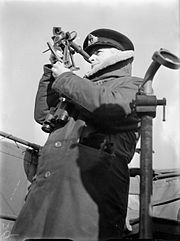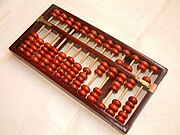User:Vtaylor/k8engineering/Measurements and units
Technology makes it possible to measure things very precisely. Atomic clocks keep time to an accuracy of one millionth of a second per year. Lasers can measure distance to a millionth of a meter. A scientist’s most important tools are the ones used for measuring – telescopes, spectroscopes, microscopes, stethoscopes, radar, thermometers, corers, Geiger counter, scales, barometers. Measurement --Bill Nye
- Measurement - the act or process of measuring; the specific size of something that is determined by measuring.
Examples
- The mechanized clock, 15th century - It quantified time.
- The Gregorian calendar, 1582 - Debugged the Julian calendar, jumping ahead 10 days to synchronize the world with the seasons
- atomic clock - in the mid-1950s, the first reliable atomic clocks were constructed. In 1967, the second was redefined in terms of the electronic transitions of a cesium atom.
Measurement ideas and words
- Accuracy is a measure of how close a measurement is to the correct or accepted value of the quantity being measured.
- Precision is a measure of how close a series of measurements are to one another. Precise measurements are highly reproducible, even if the measurements are not near the correct value.
Attributes that are measured:
- big, bright, close, cold, deep, dim, distant, empty, enormous, equal, equivalent, fast, few, heavy, high, hot, large, light, long, loud, low, many, massive, minute, narrow, quiet, scant, shallow, short, slender, slim, slow, small, tall, thick, thin, vast, wide
International System of Units - the standard modern form of the metric system. The name of this system can be shortened or abbreviated to SI Units, from the French name Système International d'unités.
The International System of Units is a system of measurement based on 7 base units. These base units can be used in combination with each other. This creates SI derived units, which can be used to describe other quantities, such as volume, energy, pressure, and velocity.
- the metre (length), kilogram (mass)
- second (time)
- ampere (electric current)
- Kelvin (temperature)
- mole (quantity)
- candela (brightness)
Other units of measurement:
- acre, bushel, byte, calorie, carat, centimeter, cord, cup, day, decibel, degree, fathom, foot, gallon, gram, hectare, horsepower, hour, inch, kilohertz, kilometer, knot, league, light-year, liter, measure, megabyte, meter, mile, minute, mph, ounce, peck, pint, pound, quart, rod, second, tablespoon, teaspoon, ton, volt, watt, yardstick
Instruments and tools used in measurement - this is a partial list:
- altimeter, anemometer, balance, barometer, clock, Geiger counter, hourglass, level, plumb, rule, ruler, scale, seismograph, spoon, stopwatch, tape measure, thermometer, timer, yardstick
Examples
- https://engineering4kids.mywikis.net/wiki/Barometer
- engineered instruments - spectrometers, oscilloscopes, cameras, telescopes, interferometers, tape recorders, thermometers etc. and tools like clocks, scale that help in improving the accuracy, quality and utility of the information obtained from an observation.
Q: Do you know what all these measuring tools are and how they are used? If there are some you don't know. pick 2-3 and do some research? What do they measure? When were they invented or first used? What units to the use?
Most engineering task include calculations and measurements. So it it is important to understand the basics.
- abacus third millennium b.c. - One of the first devices to augment human intelligence. Also called a counting frame, a calculating tool for performing arithmetic processes. The abacus was in use centuries before the adoption of the written modern numeral system and is still widely used by merchants and clerks in China, Japan, Africa, India and elsewhere.
- electronic calculator - a small, portable electronic device used to perform both basic and complex operations of arithmetic. The first solid state electronic calculator was created in the 1960s, building on the extensive history of tools such as the abacus, developed around 2000 BC; and the mechanical calculator, developed in the 17th century. It was developed in parallel with the analog computers of the day.
Planck constant links the amount of energy a photon carries with the frequency of its electromagnetic wave. It is named after the physicist Max Planck. It is an important quantity in quantum physics. The Planck constant is defined by the equation:
- E = h\nu.
In SI Units the Planck constant is about 6.62606×10−34 J·s.[1] Scientists have used this quantity to calculate measurements like the Planck length and the Planck time.
- How to Measure Planck’s Constant Using Lego - If you’re searching for the perfect present for the physicist who has everything, how about a Lego kit for measuring one of the universe’s fundamental constants?
Q: There are some games and simulations provided below. Try them out.
Learn more...
- How can I measure that? * Have a look at the images and enter the common name of the measuring device often used by engineers! For each question fill in the appropriate answer. The answer box will turn green if your response is correct and red if incorrect.
- PhET Interactive Science Simulations (interactive simulations website) - simulations encourage quantitative exploration, offer measurement instruments including rulers, stop-watches, voltmeters and thermometers. Manipulate these interactive tools. Responses are immediately animated effectively illustrating cause-and-effect relationships. Multiple linked representations (motion of the objects, graphs, number readouts, etc.)
- Calculator Riddles - try these. Did you get an answer that makes sense? Did you have to turn the calculator upside dowd to see the "answer"?
- Engineering Toolbox - Tools and Basic Information for Design, Engineering and Construction of Technical Applications

